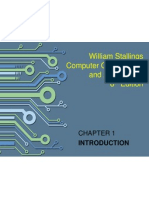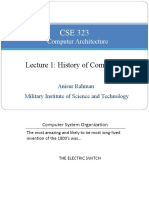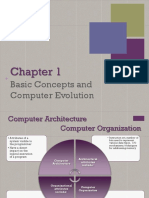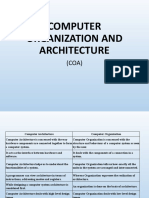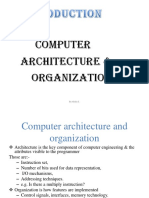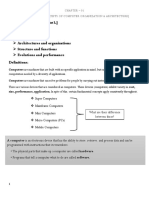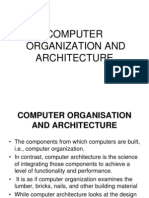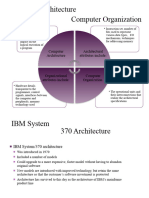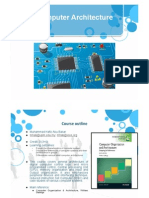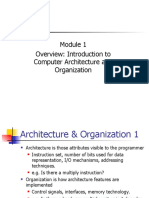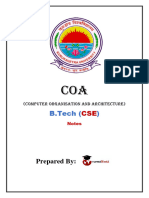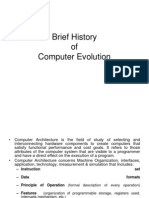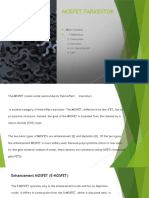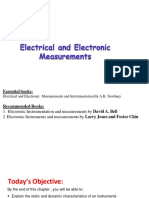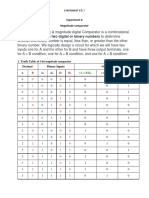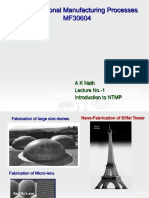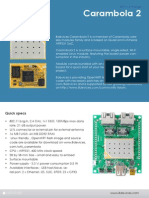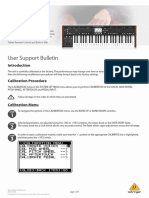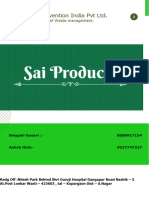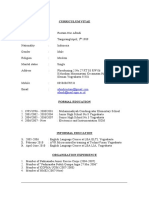Chapter 1 - Basic Concepts and Computer Evolution
COMPUTER ARCHITECTURE VS COMPUTER ORGANIZATION
Computer Architecture Computer Oragnization
1. Attributes of a system visible to the programmer The operational units and their interconnections that
2. Have a direct impact on the logical execution of a realize the architectural specifications
program
Architectural attributes include: Organizational attributes include:
Instruction set, number of bits used to represent Hardware details transparent to the programmer,
various data types, I/O mechanisms, techniques control signals, interfaces between the computer
for addressing memory and peripherals, memory technology used
IBM SYSTEM 370 ARCHITECTURE
1. Could upgrade without having to abandon original software االصل
ي البنامج
التخل عن ر
ي يمكن التطوير بدون
2. New models are introduced, but retain the same architecture so that the customer’s software
investment is protected (IBM System/360 : Was the industry’s first planned family of computers)
STRUCTURE AND FUNCTION
Hierarchical system Set of interrelated subsystems
Structure The way in which components relate to each other
Function The operation of individual components as part of the structure
FOUR MAIN FUNCTIONS OF A COMPUTER
Data processing Data may take a wide variety of forms and range of processing is broad
Data storage Short-term , Long-term
Data movement Input-output (I/O) , Data communications
Control A control unit manages the computer’s resources
FOUR MAIN STRUCTURE OF A COMPUTER AND CPU
STRUCTURE OF A COMPUTER STRUCTURE OF A CPU COMPUTER
Main
I/O
1. CPU : controls the operation of the 1. Control Unit : Controls the operation of
memory
System
Bus
computer and performs its data the CPU and hence the computer CPU
CPU
processing functions 2. Arithmetic and Logic Unit (ALU) : Registers
Internal
ALU
2. Main Memory : stores data Performs data processing function
Bus
Control
Unit
3. I/O : moves data between the computer 3. Registers : Provide storage internal to Sequencing
Logic
CONTROL
UNIT
and its external environment the CPU Control Unit
Registers and
Decoders
Control
4. System Interconnection : communication 4. CPU Interconnection : communication Memory
Figure 1.1 A Top-Down View of a Computer
among CPU, main memory, and I/O among control unit, ALU, and registers
MULTICORE COMPUTER STRUCTURE
Central 1. Part of the computer that fetches and executes instructions
processing unit 2. Consists of an ALU, a control unit, and registers
(CPU) 3. Referred to as a processor in a system with a single processing unit
Core 1. An individual processing unit on a processor chip
2. May be equivalent in functionality to a CPU on a single-CPU system
1. A physical piece of silicon containing one or more cores
Processor 2. Is the computer component that interprets and executes instructions
3. Referred to as a multicore processor if it contains multiple cores
� CACHE MEMORY
1. a small-sized type of volatile (temporary storage of memory) computer
memory that provides high-speed data access to a processor
2. Multiple layers of memory between the processor and main memory
3. smaller and faster than main memory (RAM)
4. level 1 (L1) closest to the core and levels (L2, L3) farther from the core
5. It is used to speed up and synchronizing with high speed CPU
HISTORY OF COMPUTERS , COMPUTER GENERATIONS
First Generation : Vacuum Tubes Second Generation : Transistors Third Generation : Integrated Circuits
1. Vacuum tubes used for digital 1. Smaller 1. Single, self-contained transistor
logic elements and memory 2. Cheaper 2. Manufactured separately, packaged in
2. IAS computer (EDVAC) 3. Dissipates less heat than a their own containers, and soldered or
Fundamental design approach was vacuum tube wired together onto circuit boards
the stored program concept. 4. Is a solid state device made 3. Manufacturing process was expensive
Prototype of all subsequent from silicon
general-purpose computers. 5. More complex arithmetic and Input
Boolean
logic
function
Output Input
Binary
storage
cell
Output
0 1 39 logic units and control units Activate
Read
Write
sign bit (a) Number word 6. The use of high-level signal
(a) Gate (b) Memory cell
0
left instruction (20 bits)
8 20
right instruction (20 bits)
28 39
programming languagesالوظائف التي Figure 1.10 Fundamental Computer Elements
opcode (8 bits) address (12 bits) opcode (8 bits) address (12 bits)
Load programs منحها السوفت وير
(b) Instruction word
Move data to peripherals
Figure 1.7 IAS Memory Formats
Opcode : عل الداتا
لت ستحصل ي
العملية ا ي Libraries perform computations
INTEGRATED CIRCUITS
1. Data storage – provided by memory cells
2. Data processing – provided by gates
3. Data movement – the paths among components are used to move data through gates
4. Control – the paths among components can carry control signals
5. Many transistors can be produced at the same time on a single wafer of silicon
6. Transistors can be connected with a processor metallization to form circuits
� MOORE’S LAW
Moore’s Law : Observed number of transistors could be put on a single chip was doubling every year
Consequences of Moore’s law: النتائج
1. The cost of computer logic and memory circuitry has fallen at a dramatic rate
2. The electrical path length is shortened, increasing operating speed
3. Computer becomes smaller and is more convenient to use in a variety of environments
4. Reduction in power and cooling requirements
5. fewer interchip connections
KEY CHARACTERISTICS OF A COMPUTER FAMILY
1. Similar or identical instruction set
2. Similar or identical operating system Later Generations
3. Increasing speed 1. LSI (Large Scale Integration)
4. Increasing number of I/O ports 2. VLSI (Very Large Scale Integration)
5. Increasing memory size 3. ULSI (Ultra Large Scale Integration)
6. Increasing cost
MICROPROCESSORS
Feature of a microprocessor - all of components of a CPU on a single chip
1. Intel developed 4004 : First chip to contain all of components of a CPU on a single chip , Birth
of microprocessor
2. Intel developed 8008 : First 8-bit microprocessor
3. Intel developed 8080 : First general purpose microprocessor
SOME DEFINITIONS
Embedded Systems The use of electronics and software within a product
The Internet of Things the expanding interconnection of smart devices, from appliances to tiny sensors
(IoT) Information technology (IT) , Operational technology (OT) , Sensor/actuator
Application processors General-purpose in nature
Dedicated processor one or a small number of specific tasks required by the host device
Deeply Embedded Subset of embedded systems , Has no interaction with a user , single-purpose device
Systems
ARM architecture processor from RISC design principles and is used in embedded systems (Cortex)
Cloud Computing A model for enabling remote execution released with minimal management effort
or service provider interaction
Cloud Networking The networks and network management functionality to enable cloud computing
Cloud Storage Consists of database storage and applications hosted remotely on cloud servers
cloud service is Software as a service (SaaS)
provided using one of Platform as a service (PaaS)
three models Infrastructure as a service (IaaS)


